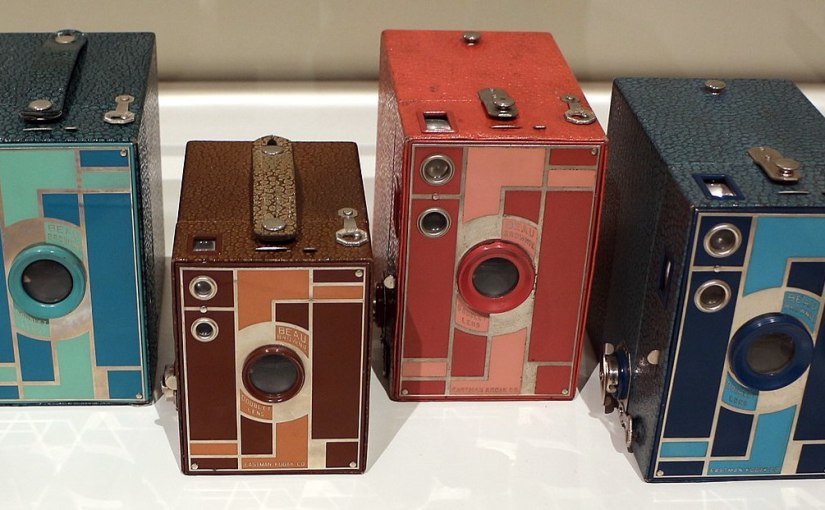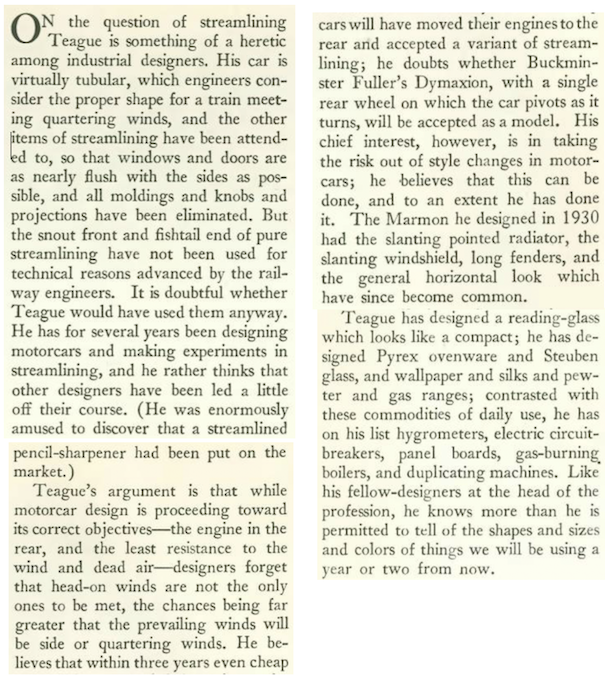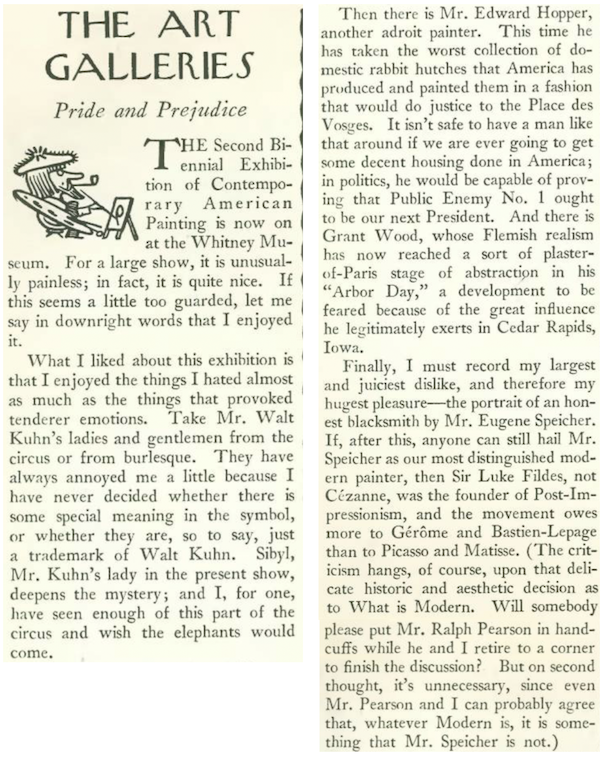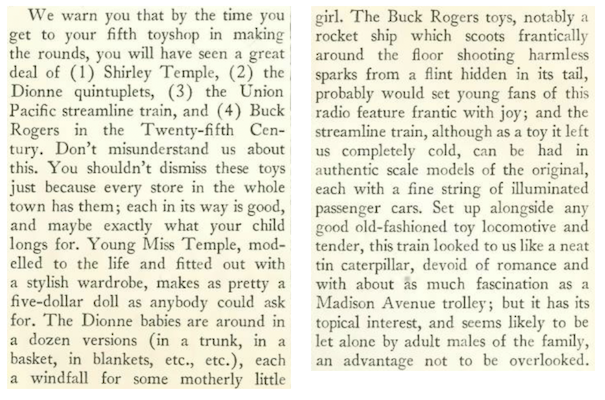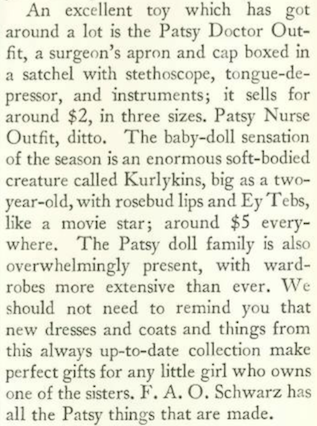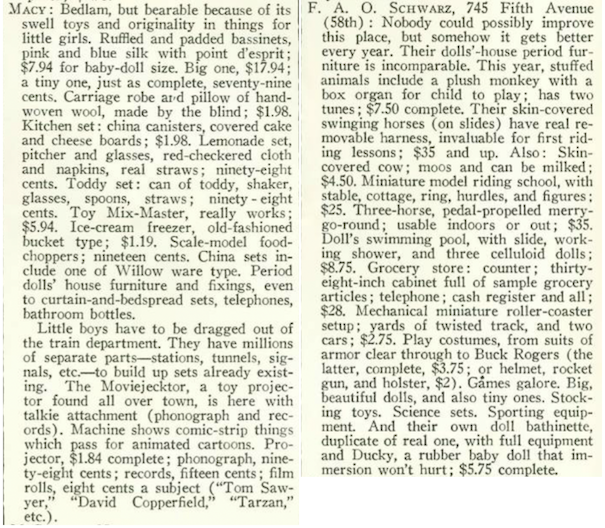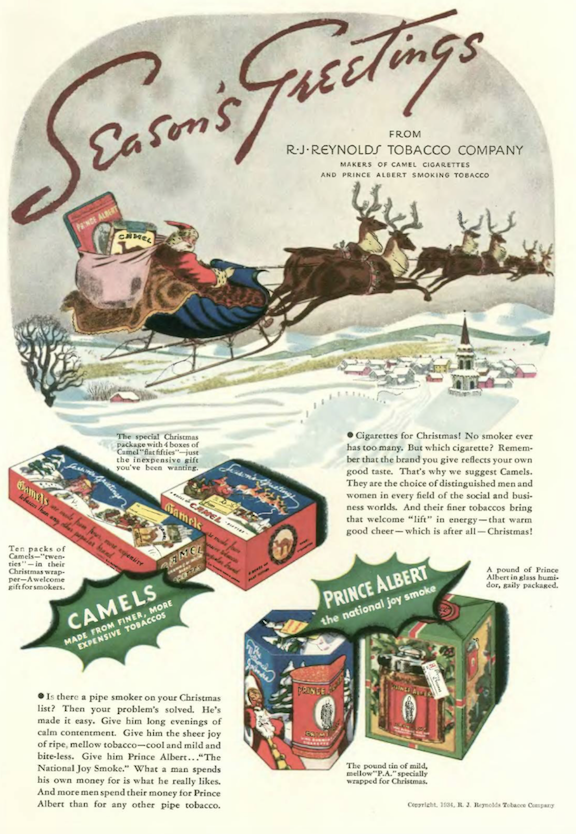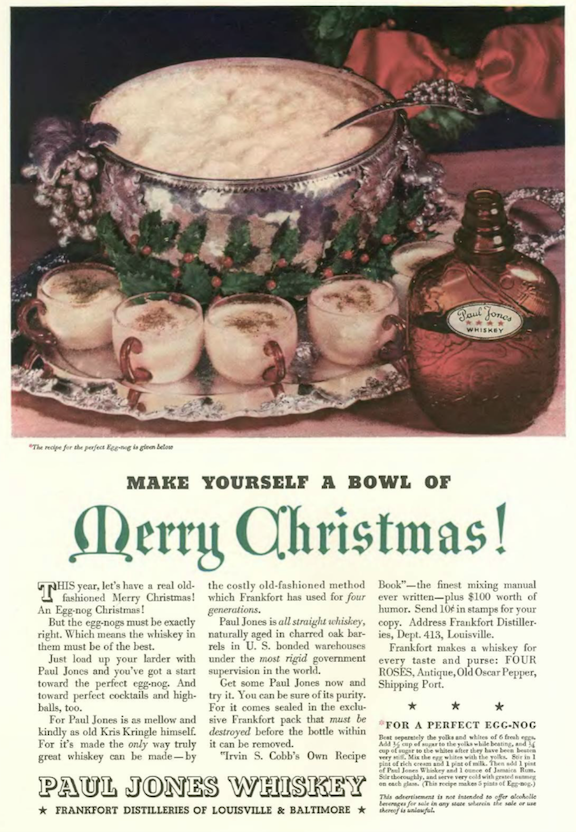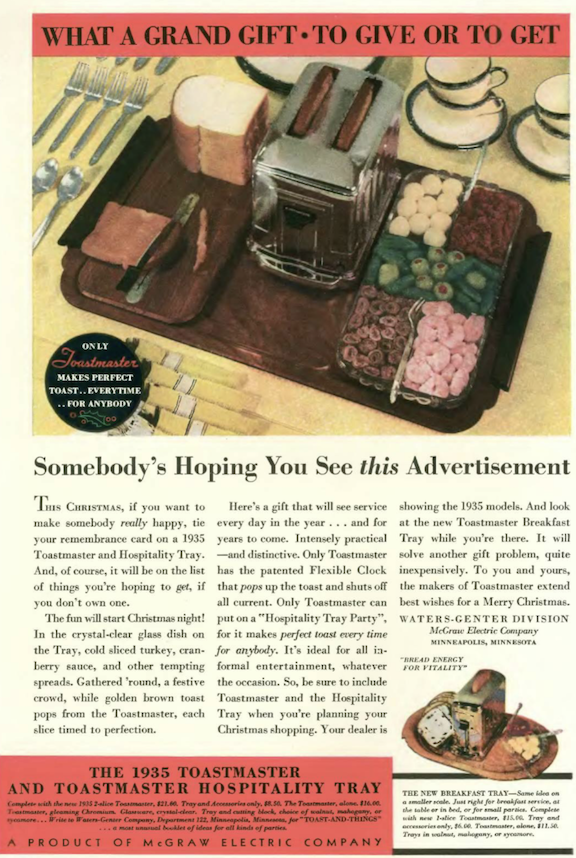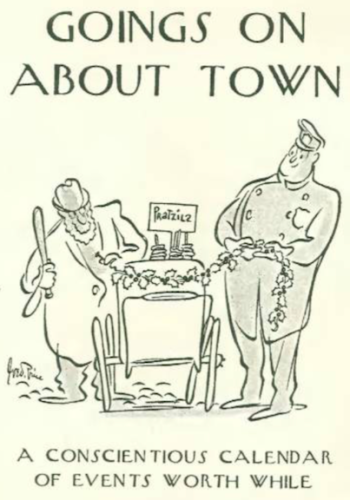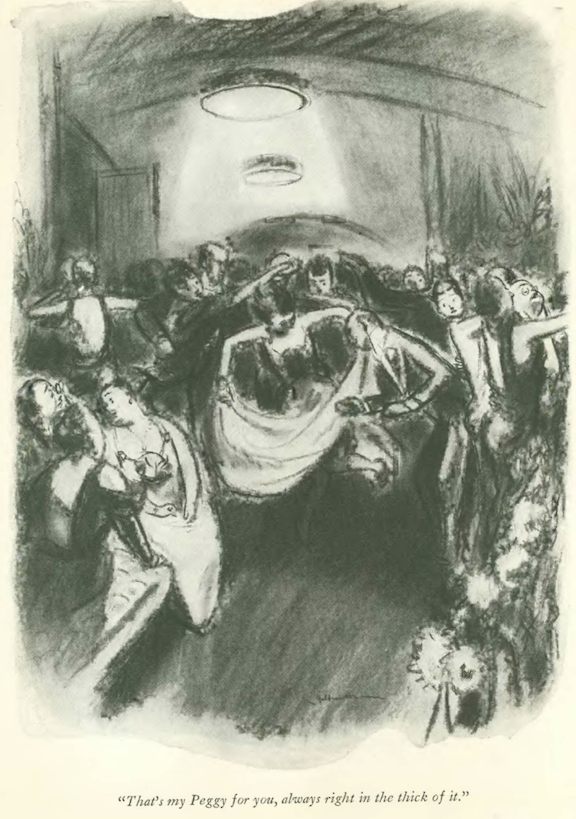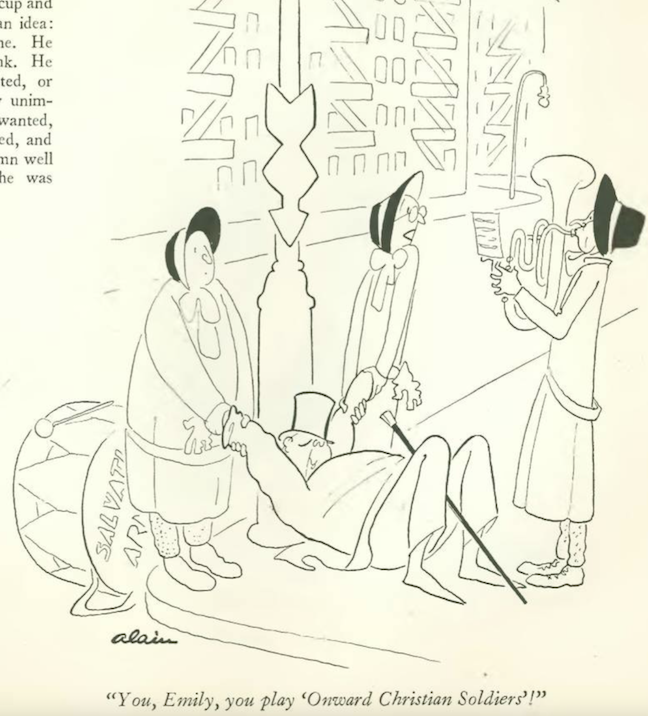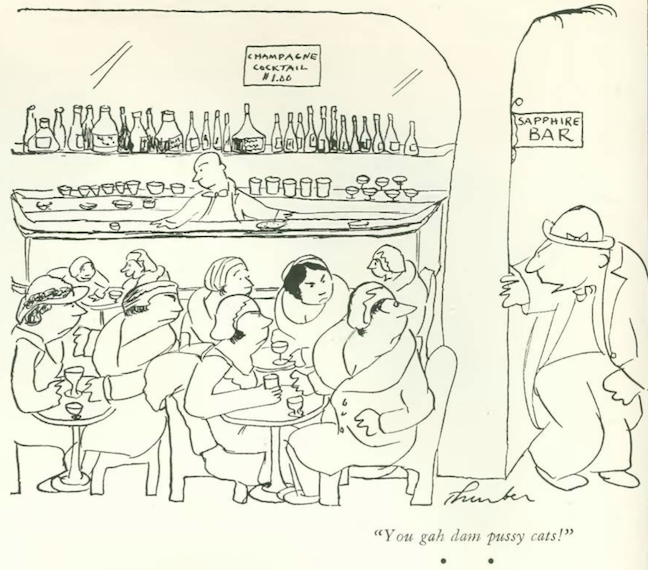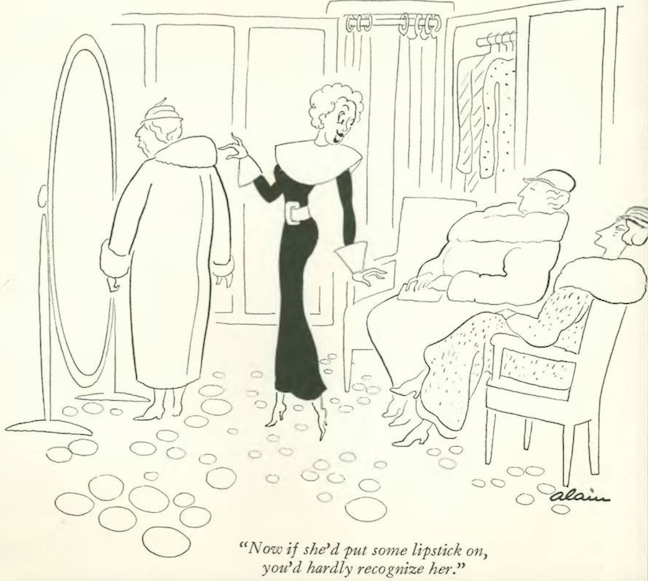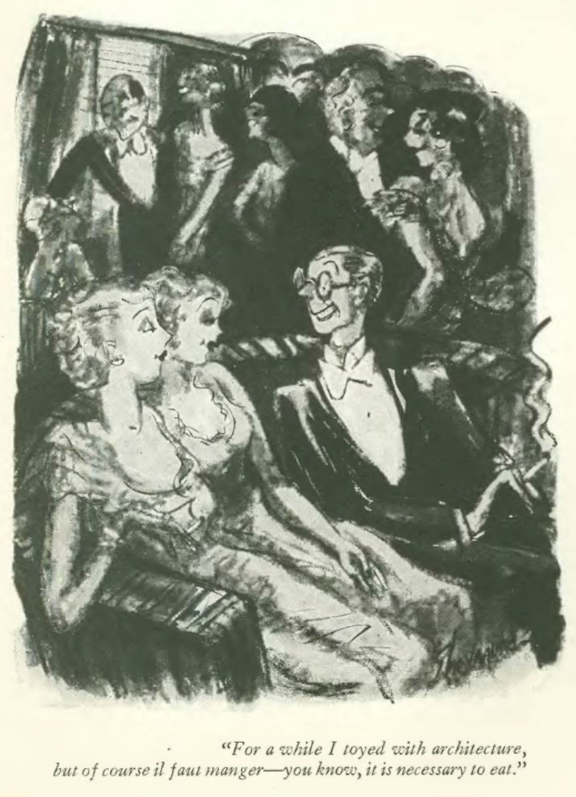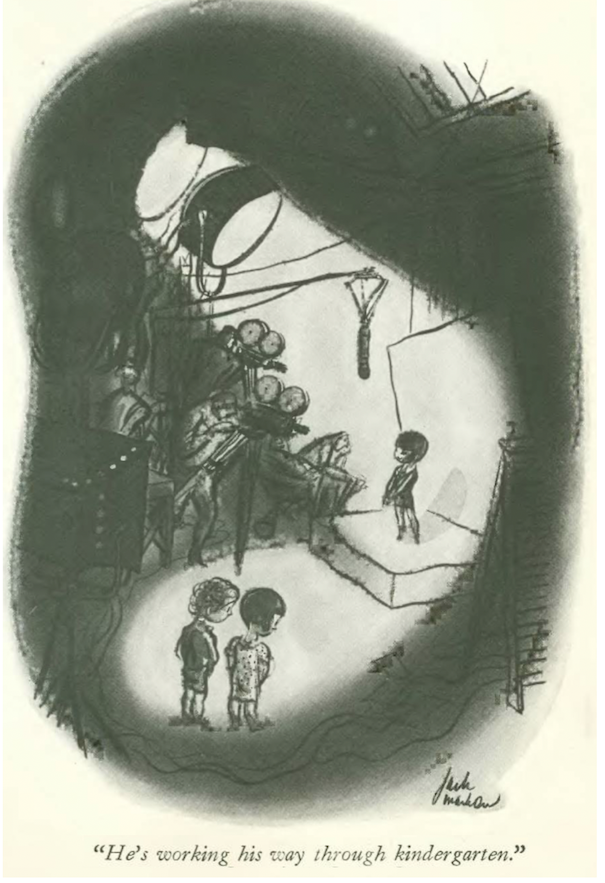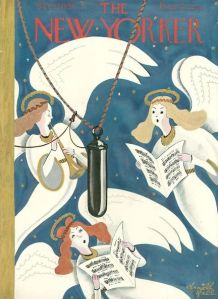Above: Walter Dorwin Teague's design for Kodak's "Brownie" camera, circa 1930. (Milwaukee Art Museum)
Walter Dorwin Teague pioneered industrial design as a profession, firmly believing that great, heirloom-quality design could be available to all, and that even mass-produced objects could be beautiful if they possessed “visible rightness.”
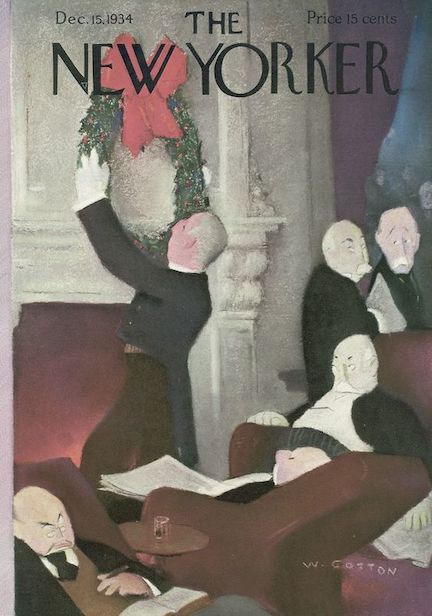
Cultural critic Gilbert Seldes profiled Teague (1883–1960) in the Dec. 15 issue, and in this excerpt he examined the designer’s role in the streamlining craze that emphasized movement and speed in everything from locomotives and automobiles to radios and pencil sharpeners.

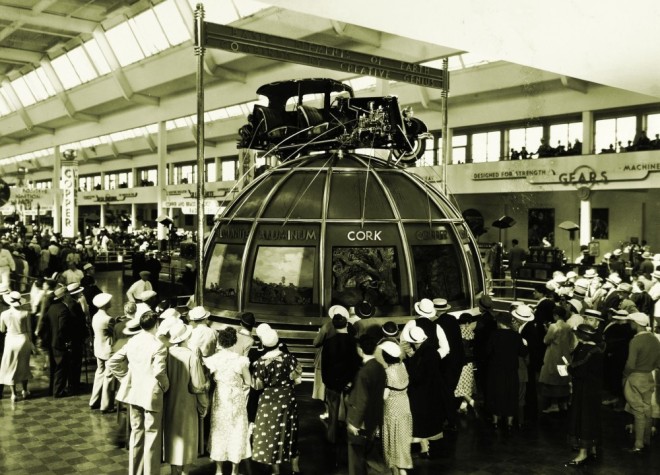
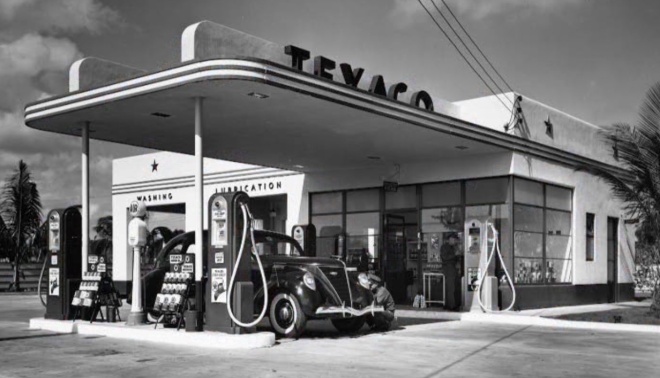
In this next excerpt, Seldes noted that Teague shared the thinking of other modernists of the time, namely that people could be herded into towers, even in rural landscapes. At any rate, Teague’s ultimate objective, according to Seldes, was to make everyday living more attractive to the masses.
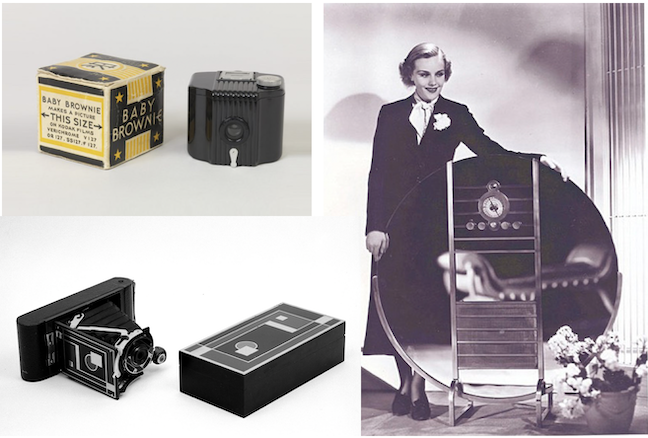
* * *
Art Depreciation
Lewis Mumford did a bit of hate-viewing during a visit to the Whitney Museum, which hosted the Second Biennial of Contemporary American Painting. Mumford found a few works he genuinely liked, but had to admit he also enjoyed the ones he hated. Excerpts:
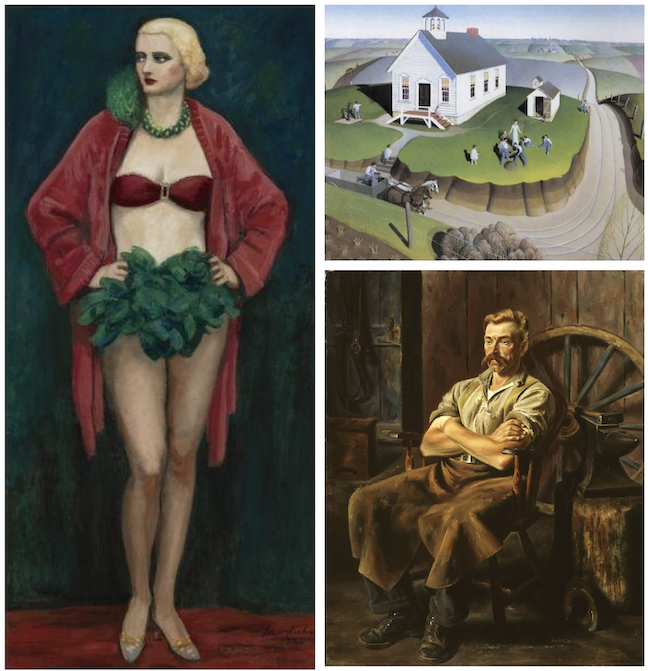
* * *
The Swash Buckles
Film critic John Mosher checked out Douglas Fairbanks Sr’s latest movie, The Private Life of Don Juan, which would prove to be the old swashbuckler’s last hurrah.
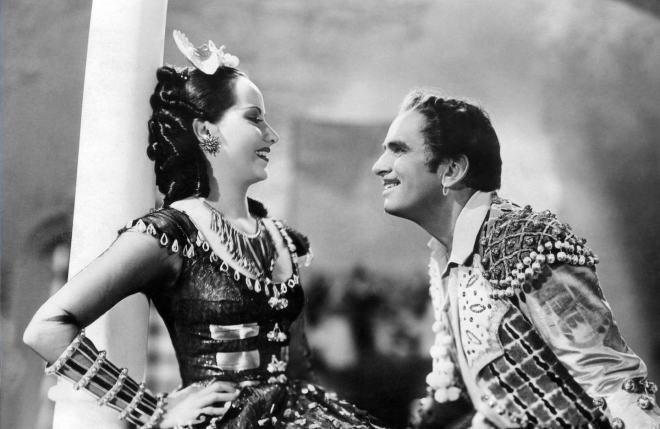
* * *
Toyland 1934
The New Yorker continued its seasonal tradition of offering exhaustive descriptions of various wares around the city, including the many new toys that would be available to children whose parents could afford them. An excerpt:

“Patsy” dolls and doctor/nurse kits were also popular sellers in 1934…
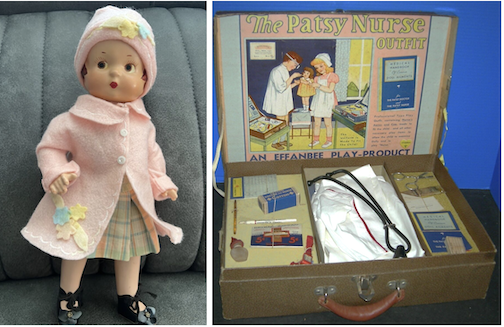
The article was followed by detailed listings of department stores and select toys. Here are excerpts featuring two of the toy biggies: Macy’s and F.A.O. Schwarz:
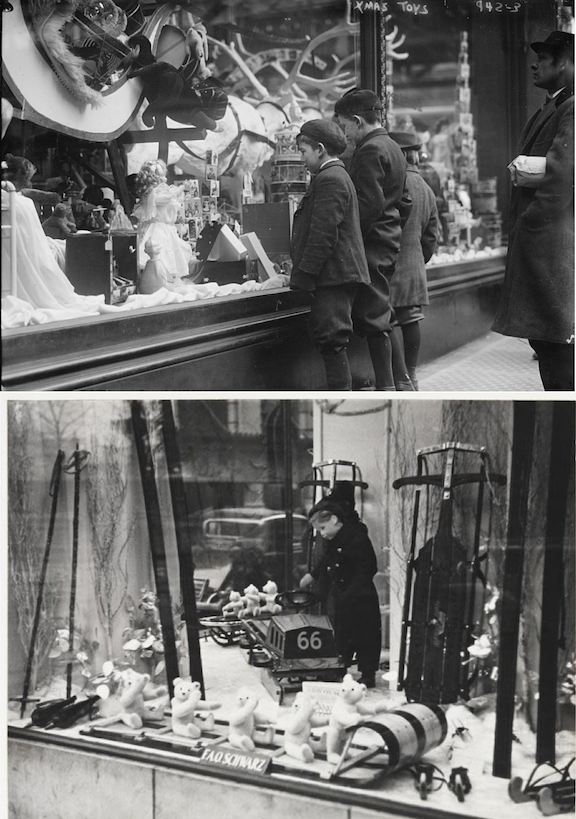
* * *
From Our Advertisers
We kick off the holiday season with Santa bringing cheer to the world, his bag laden with tobacco products from the jolly elves at R.J. Reynolds…
…along with your cigarette you could enjoy a cup of this frothy eggnog spiked with a generous shot of Paul Jones…
…and I pity the poor soul who was hoping for a toaster from Santa…perhaps the companion “Hospitality Tray” will add an extra dose of good cheer…
…however some may have wished for a revolutionary Parker “vacumatic” pen…no more dipping into the old ink-well…
…I include this ad simply for the terrific Abe Birnbaum caricature of Broadway producer Sam Harris…

…on to our cartoonists, we begin with this merry spot by George Price…
…William Crawford Galbraith gave us another person in the spirit of the season…
…as did Daniel ‘Alain’ Brustlein…
…a less cheery note comes to us from James Thurber, who gave us a patron unhappy with changes to his familiar watering hole…
…and we have Alain again, and a spirited salesperson…
…Barbara Shermund gave us a glimpse of the awkward courtship rituals of the male peacock…
…and we close with Jack Markow, and the demands of Hollywood life…
Next Time: Music in the Air…
